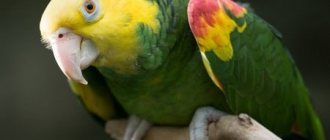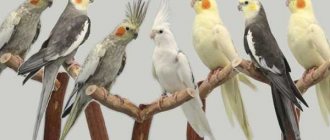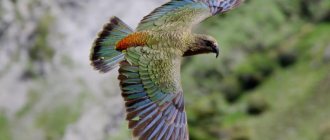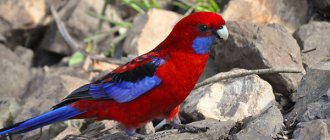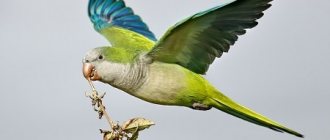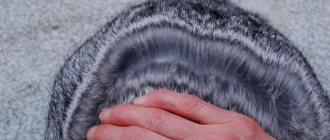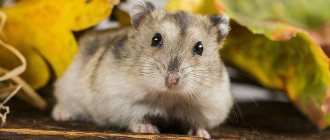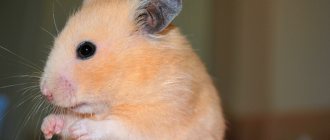The African gray parrot is one of the most intelligent birds in the world. Natural cunning, observation and caution help Grays survive in natural conditions, and also contribute to rapid adaptation in captivity. This parrot, despite its difficult character, easily communicates with humans and learns quickly. The long-lived parrot effortlessly copes with the role of everyone's favorite, but determines only one companion for itself.
This article contains all the most interesting things about the African Gray parrot: appearance, place of residence, intelligence, health and longevity. In addition, the secrets of choosing, training and successfully keeping an “African” at home are revealed.
Description of the Jaco parrot
Grays are extravagant birds that are distinguished by specific characteristics and extraordinary appearance.
| Adult length | 0.3—0.36 m |
| Adult weight | 0.4 – 0.65 kg |
| Beak | Curved to the bottom, black or ivory in color (depending on the subspecies). |
| Eyes | Straw-colored, and the skin around the eyes is white. |
| Legs | Black-gray |
| Tail | Straight with even feathers, reaches 0.08 m. |
| Color | Mostly gray with inclusions of purple-red or ash-gray feathers (depending on the subspecies). |
Experts can determine the sex of a Jaco by appearance - their head shape, color. It is also believed that females have a rounder nose, while males have a specific hump. But the most accurate method for determining gender is DNA research.
The first mentions of gray parrots are found in ancient manuscripts, which say that Jews kept them at home about 3,000 years ago. It is believed that it was then that the birds began to be called "Jaco" because they made a similar sound. Over time, birds began to be sold as decoration for rich homes. European nobles kept these parrots because of their beauty and ability to speak well. Among the famous breeders are King Henry XII, Vatican Cardinal Ascanio. One literary source even notes that the cardinal's bird recited a passage from the Bible by heart.
But it was forbidden to import luxurious gray beauties into the Soviet Union. But clever craftsmen found a cunning, but not entirely humane way out. The Grays were given a tablespoon of alcohol, after which they fell asleep for a day. The parrot was immersed in a drawing tube with holes for air, and at customs it was presented as a dead anatomical aid that was being imported for the purpose of study. In this way, parrots were delivered to their future owners.
General health problems
African Grays may be predisposed to feather plucking, calcium deficiency, vitamin A and vitamin D deficiency, respiratory infections, psittacosis, and the beak and feather disease ornithitis.
Vitamin deficiencies can be prevented by providing your bird with a wide variety of fruits, as well as vegetables high in beta-carotene, such as cooked sweet potatoes and fresh cabbage.
Feather picking is usually a sign of a bored bird that is not getting enough mental stimulation, attention or exercise.
Where they live and lifestyle
| Photo of Jaco Parrot | Localization on the planet | Map |
| Wild populations of gray parrots are concentrated primarily in West African countries. Isolated flocks of birds are also observed in its eastern part - in Tanzania and on the island of Kilimanjaro. |
Grays love to settle in low areas of the jungle, as well as along the ocean coast. But due to increased timidity, parrots prefer tall palm trees, where they also spend their sleep time. In the morning, birds fly out to look for food. They fly quickly over long distances. The flock can be heard from afar, because during the flight they make a lot of noise, making piercing whistling sounds. It is worth noting that when danger approaches, the birds’ cry changes its tone - it becomes hoarse, and when feeding, the birds become quiet and are almost inaudible.
The diet of wild Jacos includes oil palm fruits, various seeds, nuts, fruits, leaves, flower nectar, but they also do not refuse snails or insects. In the absence of the required amount of food, they can fly into millet agricultural crops, which sometimes causes significant harm. At sunset, parrots flock to spend the night in large flocks. The mating season of Jacquot depends on the place of residence: for example, the summer months are in the Congo and Uganda, and the winter-spring months are in Liberia and Nigeria. Birds build nests in the hollows of tall trees. Usually there are 2-4 eggs per clutch.
In recent years, the number of Jacos in the world has decreased catastrophically. The main reasons are poaching for sale and uncontrolled deforestation of the jungle. The African gray parrot is listed as critically endangered by CITES.
Lifestyle
Feathered Jaco breeds spend a significant part of their lives in trees. They usually fly away at an early age to search for food. They eat berries, nuts and greens. Often flocks fly across grass fields. Previously, there were so many of them that they often ate up all the crops. Nests are formed in tree hollows.
During the mating season, males dance to females. If she likes it and joins in, this behavior is repeated several times a day. Females are able to lay three to four eggs and after thirty days the chicks begin to hatch. After two months they fly away, but still need parental care. The fosterling quickly gets used to people.
Types of Jaco parrot
| View | Description | Photo |
| Red-tailed Gray Gray (Psittacus erithacus erithacus) | The largest representative of this breed (reaches a length of 36 cm). It has an ash color, a red tail, and a yellowish-gray iris. | |
| Subspecies of the Red-tailed species: Ghanaian Princess Gray, Royal (Psittacus erithacus princeps) | It has gray-red plumage. Lives on the islands of the Gulf of Guinea. | |
| Brown-tailed Gray Gray (Psittacus erithacus timneh) | Reaches a length of 29 cm. It has a dark gray color and a light beak. |
Mutated Jacos are very rarely found in the wild. More such individuals are observed during artificial breeding.
Among them the following mutations were noticed:
- White;
- Yellow;
- Gray-pink;
- With white feathers on the tail;
- With a white border of all feathers.
Artificially eaten subspecies
Currently, there are many more subspecies of gray parrots than exist in nature. All of them were bred artificially by ornithologists.
Here are some of the new subspecies of the African gray bird:
- Gray-pink are parrots whose feather edges are pink rather than white.
- Albinos are completely white individuals.
- Yellow birds are lutinos. Their plumage is pale yellow, almost beige.
These birds can be purchased at any reputable nursery. Ornamental parrots of the yellow gray breed look bright and unusual.
The gray parrot is an exotic bird with a difficult character. If you purchase a young specimen and give it enough time and attention, you can raise an intelligent and devoted friend who will delight you with his company for many years.
How long do Jaco parrots live?
Scientists call the average life expectancy of gray parrots from 30 to 49 years. The official maximum age to which a domestic gray parrot has lived as a pet is 49.7 years (according to the scientific journal International Zoo Yearbook).
They say that there were record holders who lived with people for 70 years, but there is not a single documentary evidence of this.
Among the jungles of Africa, Grays rarely live to be 10 years old. The life of a wild gray parrot is influenced by a number of factors:
- accessibility and availability of feed;
- predators;
- shooting of birds by local aborigines;
- poachers who catch birds for sale.
How to determine age
The age of a gray parrot is determined by the color of the iris, and less often by the color of the tail.
| Age | Iris of the eyes | Tail |
| Chick up to 3 months | Black | Grey |
| 3 months – 1 year | Dark gray | Burgundy |
| 1-1.5 years | White-gray | Red |
| After 1.5 years, the standard color of an adult bird is acquired | Yellow | Rich red |
Causes of early death
The causes of early death of gray parrots in captivity are:
- poor nutrition;
- lack of sufficient space, small cage;
- hitting the bars of the cage;
- poisoning with food, toxic substances (gases, paints);
- open apartment window;
- low temperature in the house;
- electrical wiring that got into the pet’s beak;
- pets (cats, dogs);
- untimely treatment of chronic diseases.
How to increase your life expectancy
The gray parrot lives as a pet for quite a long time. But only if you take care of it correctly. The main factors that increase the lifespan of a bird are:
- Quality care.
- Balanced diet.
- Comfortable cage or aviary.
Video Give me a sausage, Petrunka Zhako
Lifespan
A significant role in the life expectancy of a parrot is played by the correct provision of necessary assistance in case of illnesses and possible injuries.
It depends on complete proper care and safety outside the cage.
In comfortable conditions, the average life expectancy of a Gray Gray is about 25 years. The maximum age of parrots of this species is about 50 years.
How to care for a Jaco parrot at home
The Parakeet is a social bird that requires both proper care and lots of companionship. In addition to a spacious cage and a balanced diet, the parrot needs constant attention - playing with it, communicating, pampering it with a variety of toys.
Arranging a cage for a Jaco parrot
Grays have a peculiar disposition, so it is not so easy to please them with housing. The gray parrot does not like any restrictions, especially space restrictions. This should be remembered when selecting a cage. Its minimum size should be 0.65*0.45*0.80 m.
Moreover, its height should be no less than 1.5–2 times the width. To prevent the bird from breaking the cage, it is necessary to choose a metal structure with rods at least 0.3–0.5 cm thick with a distance of 3–4 cm between them. It is necessary to attach a feeder, a drinker, perches, a piece of chalk, and a mineral stone to the cage.
The shape of the bird's house does not matter for the parrot, so it can be selected depending on your own interests or the interior of the apartment.
Special attention is paid to the cage lock. Jaco is a smart bird, and it will not be difficult for her to open a regular bolt or unhook the lock. To prevent escape, it is better to install a small carabiner with a locking system or a furniture latch.
It is better to place the cage on a hill (a table or a special support), in a secluded, remote place.
In order for a bird to accept its new home, it must be accustomed to it:
- carry the parrot on your hand into the cage, but do not close it;
- repeat a certain command (for example, “house”) when bringing the bird into the cage, and be sure to reward with treats when the command is successfully executed;
- In the first days, stay with the parrot longer, and leave him alone indoors less.
Forbidden:
- forcing the parrot into the cage by force;
- lure inside by placing treats there.
To prevent the bird from getting bored in the absence of its owner, it will need toys for entertainment.
When choosing accessories for fun, preference should be given to forage toys. Their work is based on the interaction of the chick with the fun, inside of which a treat is hidden, which stimulates the bird's natural ability to obtain food. To get food, you need to press, pull, yank, twist.
The following are also suitable:
- bath;
- mirror;
- ladder;
- hanging swing;
- bell;
- tunnel house;
- parrot toy;
- ball;
- carousel.
Video He is smarter than. Talking Jaco, African gray parrot
What to call Jaco
The gray parrot is named so that the chick likes the name. When choosing a name, follow these rules:
- The name should be short (maximum three syllables) so that the parrot can learn it;
- Choose a name that contains hissing and voiceless consonants (k, e, sh, a, sch, zh, h, t, g, d, p, p, a, e, i, y) - those letters that a bird can pronounce ;
- Avoid complex or two-syllable names, such as Robin Hood or Bonifacio.
In order for a parrot to remember its name, it needs to repeat the name every day for 10-15 minutes in a gentle, kind voice. Over time, the pet will understand that there is no danger in repeating its name, and will begin to respond to it.
| Example names for Jaco | ||
| Men's | Women's | Universal |
| Kesha, Gosha, Zhora, Kir, Jacques, Joe, Georges, Kai, Tristan, Chuk, Huck, Agar, Rurik, Argus, Freddie, Chester, Peter, Yolk, Chuck, Carlos, Diego, Juan, Horn, Donut, Darius. | Audrey, Diva, Rose, Gerda, Wendy, Isolde, Erica, Desiree, Cassie, Peppa, Betty, Kitty, Peggy, Bijou, Greta, Berta, Augusta, Kerry, Jessie, Chiara, Tiara, Aria. | Chris, Gary, Ricky, Toby, Tahiti, Fiji, Bioko, Robbie, Archie, Chicky, Jerry, Nikki, Cookie, Toto, Coco, Chichi, Rocky, Arnie, Josie, Cherry, Ciro, Tutu, Pepo, Toto. |
Jaco has difficulty with the letters “c, z, s,” and he cannot pronounce the sounds “l, m, n” at all. Therefore, if we teach a bird to say a name with such letters, we will hear the parrot stutter or burr.
What to feed your Jaco parrot
| Diet of the domestic parrot Jaco | |
| Authorized products | Prohibited Products |
| all types of grains; legumes; sprouted grain; porridge (buckwheat, millet, rice); nuts in small quantities so as not to cause obesity; vegetables (carrots, cabbage, cucumbers); seedless fruits (bananas, apples, pears, plums, apricots); berries (currants, strawberries, grapes, blueberries and pomegranate seeds); greens (dandelion leaves, lettuce, clover, radish tops, spinach); mineral stone and tree branches; vitamin and mineral supplements; special store-bought food for parrots; Animal feed (meat, eggs, fermented milk products) is given no more than once a month. | juices; fresh bread; avocado; persimmon; mango; potato; seasonings; carbonated drinks. |
| The sippy cup should always contain clean drinking water, which is changed daily. | |
The diet of wild birds varies depending on the time of year. Therefore, including different seasonal foods for domestic gray parrots is normal, and sometimes even beneficial. Instead of treats, you can offer your parrot fried sunflower seeds or candied fruits from permitted fruits.
Care and hygiene
With rational care, a gray parrot will become a true friend for the whole family. But you will have to take care of your pet every day.
Key aspects of proper care:
- Daily wet cleaning in and around the cage (birds are sloppy and scatter food), every week - general cleaning.
- Clean the feeder and drinker every day.
- Periodically bathe your pet in the shower.
Under no circumstances should Jaco's wings be clipped. Trimming feathers can cause behavioral problems and will also remove the ability to fly. And as you know, flying provides the necessary physical activity and helps control and coordinate the movements of your feathered friend.
An important point that can often be encountered in everyday life is the movement of a bird. The Gray is a rather large bird, and transporting it, for example, to a dacha for the summer or taking it for a preventive examination to a doctor is not entirely easy. For this it is better to use special carriers.
An excellent carrying option for both the owner and the Jaco parrot is a backpack carrier. This is a convenient backpack box in which a bird can be transported over long distances. In such a backpack it is allowed to carry a feathered animal on an airplane, and it is also convenient to travel by car, simply by attaching it to the seat with seat belts.
Diseases prevention, vaccination
| Non-communicable pathologies | Infectious diseases | Parasitic diseases |
| 1. Self-plucking is most often found in representatives of large species living in cages. The pathology is caused by unfavorable living or nutritional conditions, psychological trauma, stress, draft, fear, dry air, and parasite infestation. In advanced cases, the bird becomes completely naked, and it is no longer possible to cure this. 2. Obesity in parrots is a disease that is caused by an unbalanced diet and lack of physical activity. If left untreated, reproductive function disappears and liver cirrhosis develops. | The disease is caused by infectious pathogens that enter the parrot's body through contaminated water or food, droppings, insect bites, or contact with an infected pet. 1. Salmonellosis; 2. Paratyphoid; 3. Aspergillosis; 4. Smallpox; 5. Candidiasis; 6. Staphylococcosis; 7. Spondylitis; 8. Spondylolisthesis. | The main reason parrots become infected with helminths is unsanitary living conditions. Among the most unpleasant parasites are down feather eaters, which feed on the barbs of feathers, down, blood and skin of the parrot. |
It is worth remembering that at the slightest suspicion of a disease, the parrot must be taken to a veterinarian to make a final diagnosis. Only a specialist can correctly diagnose the pathology and select rational treatment.
To prevent the development of pathological changes in the body, you must adhere to the following recommendations:
- Take your pet to the veterinarian for a preventive examination every year.
- Keep the cage clean.
- Every three months, disinfect the bird's home and equipment.
- Protect the bird from possible causes of injury.
- Vaccinate birds against staphylococcosis and bird flu.
Breeding Jaco parrots
It is possible to breed Gray Jacos in captivity, but for this the birds must be kept in large enclosures and they must be provided with special care. Reproduction begins in May. A couple of parrots are placed in an isolated enclosure and they try not to disturb them. A nest is placed in the aviary - a box measuring 0.28 x 0.28 x 0.6 m, which the birds arrange independently when laying.
During the mating season, the male performs a wedding dance lasting 5-10 minutes. He ruffles his plumage and begins to dance around his beloved, making specific sounds similar to grunting. The female repeats the male's melody, and then assumes the pose of a chick asking for food. The male imitates feeding. There may be several such wedding steps per day. During the mating season, which lasts from 1 to 2 weeks, the female lays 3-4 eggs and then incubates them for 26 days. The chicks are fed for 2.5 months. Then the chicks fly out of the nest, but for some time they still need the help of their parents.
Intellectual abilities of a parrot
Grays like to whistle, shriek, squeal, click their beak loudly, and especially copy the sounds they hear. They also love to sing, show acrobatic tricks, and dance funny. These hobbies are an integral part of bird life, for the sake of which they are mainly kept at home.
Thanks to their love of imitation, they are easy to train and quickly learn to speak. With proper training, one bird can remember almost 1,500 sounds.
Doctor of Sciences I. Perpperberg managed to prove that the gray parrot does not just repeat words, but can also associate their meaning with shapes, colors and numbers. It is also worth noting that red-tailed and brown-tailed species do not differ in intelligence, and their mental abilities are equally high. To ensure that these intelligent birds do not get bored in captivity and do not develop behavioral problems (for example, self-plucking from boredom), you need to constantly play different games with them, communicate a lot, and offer a variety of toys.
Intelligence
The Jaco parrot has unique intelligence and exceptional memory. Good learning ability, dynamic, observant and curious. She copes with tasks without much difficulty and does everything with great pleasure. Easily reproduces sounds and repeats intonation. Jaco's character is not an easy one. Females are calmer and more silent than males, who often behave more irritably.
Once in the home environment, he looks closely at those around him for a long time. The taming of the Jaco occurs gradually, adaptation to home conditions occurs quickly. Gradually begin to memorize words, short phrases, perform various tricks and tasks, try to make it more difficult each time. Dedicate to studying every day, but you need to have a lot of patience. The result will not keep you waiting. Learn and develop from 2 - 3 months.
How to teach Jaco to speak
It is very easy to train gray parrots to speak. Moreover, the ability to remember and imitate is the same, regardless of gender or subspecies. Don't be disappointed if your parrot doesn't talk for a long time. A bird can be silent for years, but sooner or later it will delight its owner with whole phrases.
After all, Jaco speaks only when he feels comfortable. And if the bird feels that it is treated like a member of the family, loved, and paid attention, then it will definitely begin to repeat what it heard.
To hear words from your pet, you should follow these recommendations:
- After purchasing a pet, give it the opportunity to get acquainted with the surroundings and family members.
- Start your studies with regular taming (the parrot should get used to the teacher well, they are not afraid of him).
- Conducts classes daily, without absences.
- Talk a lot in the presence of a bird.
- Repeat daily the words you are supposed to learn, the name of the pet.
- Praise the chick and encourage its success with treats.
- In the absence of the owners, leave the parrot playing music, cartoons or movies.
Watch your vocabulary, and do not try to use filler words in the presence of a bird. In practice, these are exactly what feathered friends like to repeat.
Causes of death
A common cause of the premature death of Jaco is errors in maintenance that lead to the pet's illness. Self-medication and delaying the moment of contacting an ornithologist greatly reduce the likelihood of a favorable outcome for the parrot.
There are also frequent cases of poisoning, as well as death of birds from accidents. In order for your pet to live a long and happy life, it is necessary to take timely preventive measures to prevent diseases, monitor the behavior of your feathered friend and, at the slightest sign of ill health, consult a specialist.
Buying a Gray: tips and tricks
Before buying a gray parrot, you need to carefully familiarize yourself with all aspects of its life and evaluate your capabilities well. Without the appropriate experience and dexterity, it will be very difficult for a beginner to cope with such a bird. But, if opportunities allow, there is enough space and time for care, then you can safely get this extravagant bird.
Experienced breeders recommend buying a Jaco at the age of 3-4 months, since it is at this age that the chicks best adapt to the environment and are best trained. It is better to buy chicks from a professional nursery that has been specializing in breeding gray parrots for several years. When purchasing, you should pay attention to the pet’s appearance and assess its health status. If the parrot is raised in a nursery, then it must have a permanent ring with the initials of the establishment.
Video Who should not have a Jaco
A healthy parrot has these characteristics
:
- Active, cheerful, curious.
- Has average fatness.
- Defecates hard feces.
- The plumage is shiny, clean, without dirt or bald spots.
- Has clear nostrils and clear eyes.
Price
Many people wonder: how to choose a Gray and how much does it cost? Pets live on average from fifty to sixty years, so when you buy a pet, you are buying a friend for life.
Thanks to their talents, birds are very popular. There is a brown-tailed species and a red-tailed one, their cost differs significantly, due to what the species looks like. So, untrained speech in the market or on the Internet through various advertisements can be purchased for 15 - 35 thousand rubles.
It all also depends on where you purchase the animal. The cost is higher in a pet store, where their price is approximately seventy to one hundred and fifty thousand rubles. They usually have their own catalog, which can be viewed online.
Breeders have fosterlings in the price range from sixty to one hundred and twenty thousand rubles. Even those who can speak and are quite old cost from three hundred thousand rubles and even more. Don’t forget to include in the price what you will feed your pet.
Next
Gray Red-tailed Gray and all information and breed
